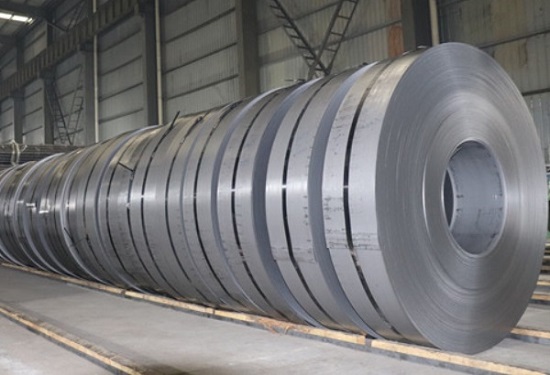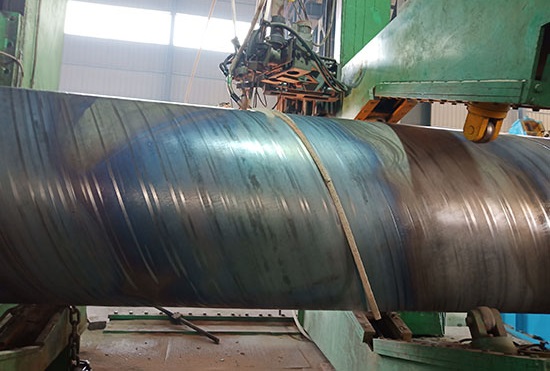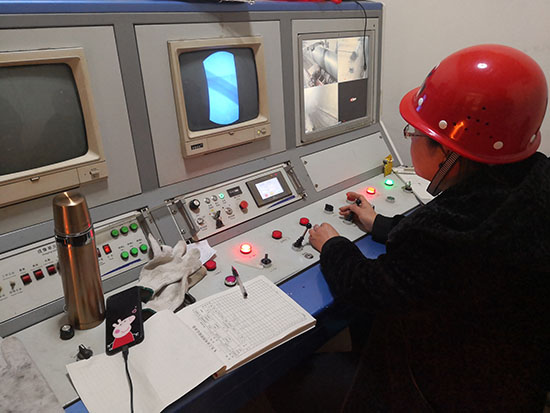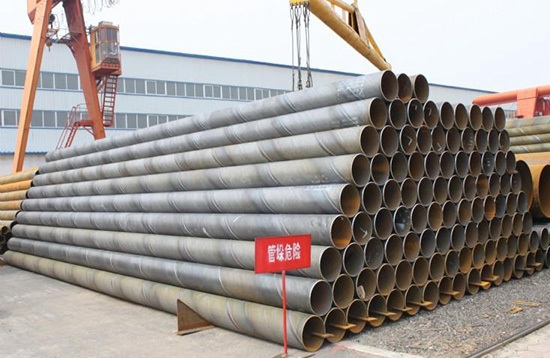Categories
- Tech & News (21)
- Pipes & Fittings (12)
- Valves & Pumps (54)
- Equipment & Tools (6)
- Facilities & Chemicals (10)
SSAW (spirally submerged arc welding) steel water pipes are vital components in water distribution and transmission systems. These pipes adhere to the standard C200 set by the American Water Works Association (AWWA) and are widely used for various water-related applications due to their durability, reliability, and cost-effectiveness. SJZ Metalsin manufactures and supplies various spiral arc-welded pipes ranging in size from 6 inches to 144 inches. Our company typically produces AWWA C200 welded steel water pipes using the double-sided spirally submerged arc welding (DSSAW) process.

ASTM A36 steel coils for the fabrication of AWWA C200 spiral welded water pipes.
The fabrication process begins with the procurement of high-quality steel coils or plates. These raw materials must conform to the specifications outlined in AWWA C200 standard, ensuring superior strength, corrosion resistance, and weldability. The steel coils are inspected for any defects or imperfections before being processed further.
The steel coils shall be flattened on the decoiling machine, followed by edge milling, leveling, and trimming, to achieve the desired dimensions and surface quality. This ensures uniformity and consistency in the final product. The prepared steel plates are fed into a spiral pipe mill, where they are gradually shaped into a cylindrical form using a continuous spiral welding process. This process involves passing the plates through a series of rollers and gradually bending them into a helical shape. The edges of the plates are then aligned and welded together to form a continuous seam along the length of the pipe.

The double-sided submerged arc welding process for the fabrication of spiral welded steel water pipes in accordance with AWWA C200.
The seam welding process is typically carried out using the double-sided submerged arc welding technique. In SAW, an arc is created between a continuously fed bare electrode and the workpiece, while a granular flux is used to shield the arc and protect the weld from atmospheric contamination. This results in high-quality, uniform welds with excellent fusion characteristics. Two submerged arc welding heads are used simultaneously to weld both the inside and outside surfaces of the pipe. The welding heads move spirally along the length of the pipe, gradually joining the edges of the steel plates to form a continuous seam weld. The welded seams are inspected using an online continuous ultrasonic automatic flaw detector. If any defects are detected, an automatic alarm is triggered, and the defective areas are marked with spray paint. Production workers adjust the process parameters accordingly to promptly eliminate the defects.

The X-ray inspection for spiral-weld steel water pipes. The factory is located in Cangzhou, Hebei province, China.
The pipes are then subjected to sizing and straightening processes to achieve the specified dimensions and straightness tolerances. Subsequently, both ends of the spirally welded pipes are beveled, with the bevel angle typically set at 37° ± 2.5°. After that, each spiral-weld steel water pipe undergoes hydrostatic pressure testing according to Section 5.2.1 of AWWA C200. Thorough inspections are conducted to assess the mechanical properties, chemical composition, fusion condition, and metallurgical structure of the weld metal. X-ray inspection is performed on all weld seams to ensure 100% coverage.

AWWA C200 SSAW steel water pipes, 12″ x 6 mm x 6096 mm, stacked in the factory yard.
The external and internal surfaces of the AWWA C200 SSAW steel water pipes shall be thoroughly cleaned to remove any contaminants, scale, or rust that may have accumulated during the manufacturing process. Depending on the application and environmental conditions, the pipes may undergo additional corrosion protection treatments, such as epoxy coating, cement mortar lining, or polyethylene wrapping, to enhance their longevity and resistance to corrosion.